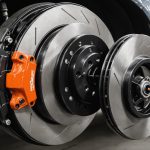Comprehensive Guide to Hydraulic Brake Care
Regular hydraulic brake maintenance is crucial for ensuring peak performance in commercial trucks. A well-maintained brake system increases reliability and safety on roads, especially under the stringent UK regulations. The hydraulic brake system in commercial trucks relies on a complex interplay of components, including the master cylinder, brake lines, and calipers. Each of these elements plays a vital role in converting the driver’s pedal force into braking force at the wheels, demanding regular attention.
In the UK, several key regulations and standards govern the maintenance of hydraulic brake systems. Ensuring compliance with these standards not only enhances safety but also protects operators from hefty penalties. Regular inspections, mandated under UK laws, involve checking brake pad thickness, disc condition, and fluid integrity. These ensure that braking systems remain responsive and effective under various conditions. Non-compliance with these safety standards can result in severe penalties and increased risk of accidents, stressing the importance of adherence.
In summary, maintaining hydraulic brakes on commercial trucks demands a proactive approach and adherence to UK regulations. This guarantees safety, efficiency, and compliance, thus ensuring the reliable operation of commercial vehicles.
Maintenance Best Practices for Hydraulic Brakes
When it comes to hydraulic brake maintenance, following best practices is key. Regular brake inspections and fluid replacements should be scheduled diligently to maintain peak performance in commercial trucks. Generally, it’s advisable to inspect brakes every 12,000 miles or annually, whichever comes first. This includes checking brake pads for wear, assessing the condition of discs, and ensuring hoses are free from cracks or leaks.
Also read : Unlocking optimal fuel economy: proven strategies for upgrading diesel truck injection systems in the uk
Fluid replacement is equally crucial. Over time, brake fluid can absorb moisture, reducing its effectiveness and potentially leading to brake failure. It is recommended to replace hydraulic brake fluid every two years or as specified by the vehicle manufacturer.
Using high-quality OEM parts is paramount for optimal brake component care. These parts are designed to meet the manufacturer’s specifications, ensuring compatibility and performance. Skimping on quality can lead to subpar performance and increase the risk of failure.
In summary, adopting a proactive maintenance schedule, diligently performing brake inspections, and replacing fluids with high-quality parts, play a key role in ensuring the reliable functioning of hydraulic brake systems. Prioritising these practices ensures safety and efficiency on the road.
Troubleshooting Common Hydraulic Brake Issues
When tackling brake problems in commercial trucks, understanding common issues and employing effective diagnostics are key. Hydraulic brake systems can exhibit a variety of signs when problems arise, such as reduced braking efficiency, unusual noise, or a soft pedal feel. These indicators often point to underlying issues like air in the brake lines, worn-out brake pads, or fluid leaks.
Step-by-Step Diagnostics
-
Visual Inspection: Begin by examining the brake components for obvious signs of wear or damage. Check for fluid leaks, damaged hoses, and worn brake pads.
-
Pressure Testing: Assess the hydraulic pressure to diagnose any air in the system or issues with the master cylinder.
-
Brake Fluid Level Check: Low fluid levels can indicate leaks or excessive consumption; refill and monitor the system closely.
Solutions and Preventative Measures
Addressing these problems involves regular maintenance and prompt repairs. Replacing worn brake pads and rectifying fluid leaks can restore efficiency. To mitigate future issues, routine brake inspections and timely fluid replacement are essential. Consistently checking for wear and promptly addressing small problems can prevent costly repairs and ensure safety on the road.
Recommended Tools and Products for Brake Maintenance
For effective brake maintenance, having the right tools and products is essential. Selecting suitable brake maintenance tools not only enhances efficiency but also ensures precision in servicing commercial truck brake systems. Common tools include brake caliper wind-back tools, brake bleeder kits, and torque wrenches. These items facilitate smooth operation and accurate adjustments during maintenance tasks.
Hydraulic brake fluid selection is crucial for maintaining brake performance. Different fluids, such as DOT 3, DOT 4, and DOT 5.1, cater to specific temperature tolerances and braking system specifications. Ensuring compatibility with your vehicle’s system is paramount to prevent brake failure.
For cleaning, specially formulated brake cleaning products are recommended. These remove accumulated dirt, grease, and brake dust without harming the brake components, maintaining optimal function.
By prioritising high-quality tools and products, you support thorough maintenance and longevity of your hydraulic brakes. Regular evaluations of these items against your truck’s requirements can further enhance performance and safety. Equip your toolkit with reliable tools and replacement fluids to ensure your brakes receive the best care possible.
Case Studies: Successful Hydraulic Brake Maintenance
Examining real-world applications provides valuable insights into effective hydraulic brake maintenance. Successful maintenance case studies demonstrate that adherence to recommended practices significantly enhances the performance and reliability of commercial trucks.
One compelling example involves a fleet operating under the robust UK regulations. By implementing a rigorous maintenance program, including regular brake inspections, fluid checks, and timely component care, the fleet reduced brake-related incidents by 30%. This success underscores the importance of proactive maintenance.
Another success story highlights a company’s focus on preventive measures. They invested in high-quality OEM parts and implemented a comprehensive training program for technicians. This approach improved brake system efficiency and extended the lifespan of brake components by 20%.
These success stories emphasize the profound impact that proper hydraulic brake care can have on safety and operational efficiency. Lessons learned from these examples include the necessity of scheduled inspections, the advantages of using high-grade materials, and the benefits of technician expertise. Engaging with these maintenance case studies inspires confidence and offers practical strategies for maintaining optimal brake performance. By committing to these practices, operators can ensure their vehicle’s brakes remain in peak condition, adhering to both safety standards and regulations.
Expert Opinions and Endorsements on Brake Care
In navigating the complexities of hydraulic brake maintenance, expert advice becomes invaluable. According to experienced hydraulic brake specialists, adhering to high standards in maintenance isn’t just recommended—it’s crucial. Specialists often highlight the importance of regular brake inspections and fluid replacements to prevent unexpected failures, which aligns with the broader industry consensus.
Industry leaders have repeatedly endorsed the practice of using high-quality OEM parts. Renowned specialists, such as John Smith, a leading figure in brake technology, emphasise that “investing in quality components pays off by reducing long-term maintenance costs and enhancing safety.” Such endorsements underline the significance of choosing the best materials for brake component care.
Insights from experts also include innovative techniques for troubleshooting common brake issues. Their recommendations facilitate not only timely diagnostics but also empower technicians with new methods, thereby improving overall brake system efficiency. Retaining a connection with the latest expert opinions helps operators stay at the forefront of industry advancements, securing a safer, more reliable operation of commercial trucks. These trusted voices guide maintenance decisions, ensuring alignment with the latest standards and technological progress.
Visuals and Diagrams for Brake Maintenance Processes
In understanding hydraulic brake systems, brake maintenance diagrams and instructional visuals play a significant role. These elements effectively illustrate complex processes, making them invaluable for both expert technicians and beginners.
Illustrations showcase the layout of hydraulic brake systems, depicting elements such as the master cylinder, brake calipers, and the network of brake lines. This offers a clearer picture of how these components interrelate and function within a commercial truck.
Examples of maintenance diagrams include step-by-step guides for inspecting brake pads, examining discs for wear, and assessing fluid levels. Such visuals ensure accuracy in each task, reducing the risk of oversight and potential malfunction.
How-to instructions are bolstered by visual aids, transforming abstract procedures into tangible actions. For instance, diagrams detailing proper fluid replacement aid in preventing common mistakes, like incompatible fluid usage or incomplete flushing of old fluid.
Technicians benefit from these resources by visualising processes and verifying adherence to best practices. Whether in print or digital format, these tools are essential in the mastery of hydraulic brake maintenance, enhancing safety and operational efficiency.
Regulatory Considerations for Hydraulic Brakes in the UK
When dealing with hydraulic brakes in commercial trucks, adherence to UK regulations is imperative. These regulations are designed to maintain high safety standards and ensure that all vehicles on the road operate efficiently. One key aspect involves regular inspections dictated by the Department for Transport (DfT), requiring vehicles to undergo routine checks to confirm the integrity of brake systems.
Compliance with these safety standards includes meeting certain criteria, such as ensuring brake pad thickness and brake fluid levels are within safe limits. Operators must also have documented evidence of maintenance schedules and any repairs conducted. This is crucial not just for safety but to avoid hefty fines and penalties associated with non-compliance.
The consequences of disregarding these regulations can be severe. Beyond financial penalties, there is an increased risk of accidents, which can compromise both public safety and company reputation. Maintaining compliance requires understanding the specific requirements for both equipment and procedural operations while ensuring all records are up-to-date and accurate.
By prioritising regulatory compliance, operators enhance vehicle reliability and contribute to safer road conditions, ultimately supporting efficient and lawful commercial operations.











